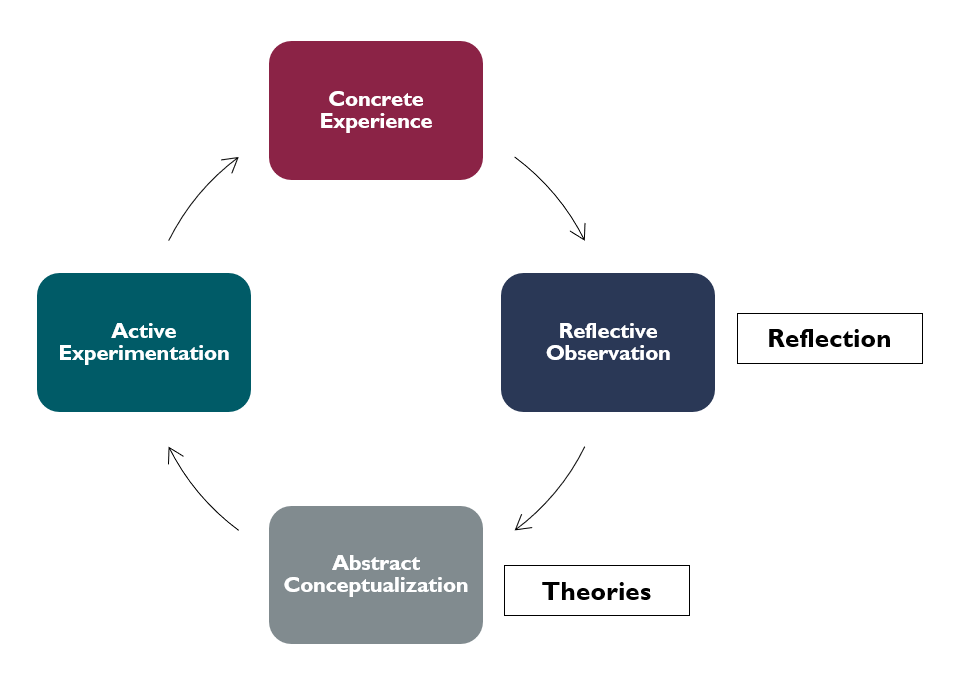Reflection is something we all do on a regular basis although we do not always know we’re doing it. Think about moments in your practice when something unexpected happened or you were not happy with the outcome of a matter, or a meeting with a client, or with an interaction with an articling student or colleague. You probably spent some time trying to figure out what went wrong, or how you could do better the next time a similar situation happens. That is reflection. However, it is not necessarily reflective practice, as you will see.
Reflective practice is a complex and nuanced “term of art” in professional education, and it has been the object of a vast scientific literature. It is widely taught and assessed in professions such as medicine, nursing, teacher education, engineering, dentistry, and social work, to name a few. In this video, we’ll explain the concept of reflective practice, but it’s important to remember that it’s an evolving and adaptable concept.
Reflective practice is based on the theory of experiential learning, which is learning from experience. The theory of experiential learning is based mostly on Kolb’s cycle of learning:

At the top of the circle is experience. By reflecting on experience, we form theories to make sense of that experience. Then we test out these newly formed theories by experimenting again, then reflecting and readjusting, before applying it to experience again. It is a cycle represented by a circle here because it’s not a linear process.
For example, as a lawyer, some of what you do may be to problem solve for your clients and with other lawyers and professionals. It is important for you to continuously develop strategies and approaches to solve problems, to experiment with these strategies, and to reflect on how they worked or did not work in order to improve your problem-solving capacity and refine your strategies. Reflection is key to this process of learning from experience.
Gibbs’ Reflective Cycle charts the cycle of reflection in practice or learning from experience. For any given experience, for example, when something goes wrong or something unexpected happens (what we refer to as a critical moment or a critical incident), you can use these questions to think about the experience and learn from it.

In this cycle, you start with a description of the experience by answering the question “what happened?” without making any judgments or drawing conclusions, then acknowledging and moving through thoughts and emotions about the experience before examining what was good and bad about it. The analysis stage involves critical thinking about the experience by bringing in outside perspectives and ideas. Having analyzed the situation, you can then draw conclusions by asking yourself the “so what?” question. In the sixth stage, you then make an action plan about if and how you would do things differently the next time a similar situation arose. The last two stages of the cycle are crucial in learning from experience and then turning that learning into action.
In a nutshell, as reflection pioneer and educator John Dewey said, “We do not learn from experience… we learn from reflecting on experience.” For Dewey, although experience was necessary for reflection, experience was meaningless without reflection.
Reflective practice in the professions comes mostly from the work of Donald Schön in the 1980s. Schön described professional practice as like being in a flat place where we cannot see very far — the “swampy lowlands” as he called it. In the swampy lowlands, we work and learn by trial and error, learning from our mistakes. In those swampy lowlands we use maps and compasses to get around — Schön called these maps our theories-in-use. However, these maps are mostly implicitly and unconsciously created and used. Reflective practice, on the other hand, makes actual maps. It helps us learn from the muddles, uncertainties and mistakes. Reflective practice also helps to compare our theories-in-use — what we actually do — with our espoused theories — what we believe we do — in order to be more effective. Reflective practice brings to light how these theories influence our decisions and actions.